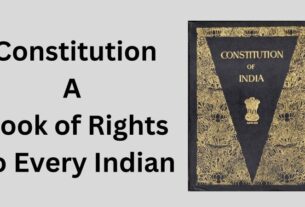In a democratic society, the role of media, particularly news channels, is paramount. They serve as the fourth estate, responsible for disseminating information, fostering public discourse, and holding power to account. However, the integrity and impartiality of news reporting have been increasingly questioned, especially in the context of Indian television news channels.

The Indian media landscape is vibrant and diverse, with numerous television news channels catering to a vast audience with varying political affiliations, cultural backgrounds, and ideological leanings. While this diversity theoretically allows for a plurality of voices and perspectives, it also opens the door to bias and sensationalism.
Bias in Indian news TV channels manifests in several ways:
- Political Affiliation: Many news channels in India are associated with specific political parties or ideologies. This affiliation often reflects in their editorial stance and coverage of news events. Channels overtly aligned with a particular party may exhibit bias by selectively reporting news that aligns with their agenda while ignoring or downplaying contrary viewpoints.
- Sensationalism and TRP Race: Sensationalism sells, and in the cutthroat competition for Television Rating Points (TRPs), some news channels resort to sensationalizing news stories to attract viewership. This can lead to distortion of facts, exaggeration of events, and prioritization of sensational content over substantive reporting. Sensationalism not only undermines the credibility of news but also skews public perception and understanding of important issues.
- Confirmation Bias: News channels often cater to their target audience, reinforcing preexisting beliefs and biases. This phenomenon, known as confirmation bias, occurs when individuals seek out information that confirms their existing views while disregarding or discrediting opposing perspectives. Channels may selectively frame stories and interviews to appeal to their viewership’s ideological predispositions, thereby perpetuating echo chambers and hindering constructive dialogue.
- Lack of Objectivity: Objectivity is a cornerstone of ethical journalism, yet many Indian news channels struggle to maintain impartiality in their reporting. Personal biases of journalists and editorial staff, corporate interests, and external pressures from advertisers or political patrons can compromise the objectivity of news content. This lack of objectivity undermines public trust in the media and hampers its ability to fulfill its democratic function.
The proliferation of biased news on Indian television channels has significant implications for society:
- Polarization: Biased reporting exacerbates societal divisions by reinforcing polarized viewpoints and deepening ideological rifts. Instead of fostering dialogue and understanding, biased news channels contribute to the fragmentation of society along political, religious, and social lines.
- Misinformation: By prioritizing sensationalism over accuracy, biased news channels propagate misinformation and falsehoods. This misinformation not only misleads the public but also undermines the credibility of genuine journalism, making it increasingly challenging for individuals to discern truth from fiction.
- Erosion of Democratic Values: A robust and independent media is essential for the functioning of a democracy. Biased news channels, however, undermine democratic values by prioritizing partisan interests over the public good, eroding trust in institutions, and undermining accountability.
Addressing bias in Indian news TV channels requires concerted efforts from various stakeholders:
- Media Regulation: Effective regulation is crucial to ensure that news channels adhere to ethical standards of journalism. Regulatory bodies must enforce impartiality norms, monitor content for bias and sensationalism, and hold channels accountable for ethical violations.
- Media Literacy: Educating the public about media literacy is essential to equip individuals with the critical thinking skills needed to navigate the media landscape discerningly. By teaching individuals to identify bias, verify information, and consume news critically, media literacy initiatives can mitigate the impact of biased news channels.
- Editorial Integrity: News channels must prioritize editorial integrity and journalistic ethics over commercial interests and political agendas. Upholding principles of accuracy, fairness, and objectivity is essential to regain public trust and credibility.
- Diverse Representation: Promoting diversity in newsrooms is crucial to ensuring a plurality of perspectives in news coverage. By fostering diversity in terms of gender, ethnicity, ideology, and background, news channels can mitigate bias and promote inclusive journalism.
In conclusion, the prevalence of bias in Indian news TV channels poses a significant challenge to the integrity of journalism and the functioning of democracy. Addressing this challenge requires a multi-pronged approach involving media regulation, media literacy, editorial integrity, and diverse representation. Only by upholding the principles of impartiality, accuracy, and accountability can news channels fulfill their democratic mandate and serve the public interest effectively.
How to Identify Bias in News Consumption: A Guide for Media Literacy
In an era marked by the proliferation of information and the democratization of media, discerning between unbiased reporting and biased narratives has become increasingly challenging. With the rise of social media, online news platforms, and 24-hour television news cycles, individuals are bombarded with a multitude of perspectives and viewpoints, making it crucial to develop critical thinking skills to identify bias in news consumption.
Here are some strategies to help you recognize whether you are consuming biased news:
- Cross-Referencing Sources: One of the most effective ways to mitigate bias is to cross-reference news stories across multiple sources. Rather than relying solely on one news outlet, seek out diverse perspectives from a range of sources with different ideological leanings. Comparing coverage of the same event or issue from various sources can help you identify discrepancies, omissions, or editorial slants.
- Check for Sensationalism: Sensationalist headlines and exaggerated language are often indicators of biased reporting. Be wary of news stories that use emotionally charged language, hyperbole, or sensational imagery to grab attention. Sensationalism prioritizes entertainment value over factual accuracy and can distort the reality of events, leading to misinterpretation and misinformation.
- Evaluate the Tone and Framing: Pay attention to the tone and framing of news stories, as they can reveal underlying biases. Consider whether the language used in the report is objective and neutral or if it conveys a particular agenda or perspective. Analyze how the story is framed, including which facts are emphasized or omitted, and whether there is a balance of viewpoints presented.
- Identify Loaded Language: Biased news sources often use loaded language that is emotionally charged and conveys a specific agenda or viewpoint. Look out for words or phrases that evoke strong emotions, such as “crisis,” “scandal,” “tyranny,” or “war on.” Loaded language is designed to sway opinions and can signal bias in news reporting.
- Question the Sources and Credentials: Scrutinize the sources cited in news stories and evaluate their credibility and reliability. Be skeptical of anonymous sources or unverified claims, as they may lack accountability and transparency. Additionally, consider the credentials and expertise of the journalists or experts quoted in the article, as biased sources may lack objectivity or have ulterior motives.
- Be Aware of Confirmation Bias: Recognize your own biases and be mindful of how they may influence your interpretation of news stories. Avoid seeking out information that confirms your preexisting beliefs and instead strive for a balanced and objective understanding of complex issues. Actively engage with diverse perspectives and challenge your own assumptions to guard against confirmation bias.
- Consider the Agenda: Assess the overarching agenda or ideological stance of the news outlet. Determine whether the channel or publication has a known political affiliation or bias, as this can influence the selection and framing of news stories. Be wary of outlets that prioritize sensationalism, entertainment, or clickbait over factual reporting and journalistic integrity.
- Consult Fact-Checking Websites: Utilize fact-checking websites and resources to verify the accuracy of news stories and debunk misinformation. Fact-checkers analyze claims made in news reports and assess their veracity based on evidence and credible sources. By consulting fact-checking websites, you can corroborate information and identify false or misleading claims.
In today’s media landscape, where misinformation and bias abound, developing media literacy skills is essential for navigating the vast array of news sources and distinguishing between reliable information and biased narratives. By employing critical thinking strategies and actively evaluating news content, you can become a more discerning consumer of information and safeguard against the influence of biased news reporting.



